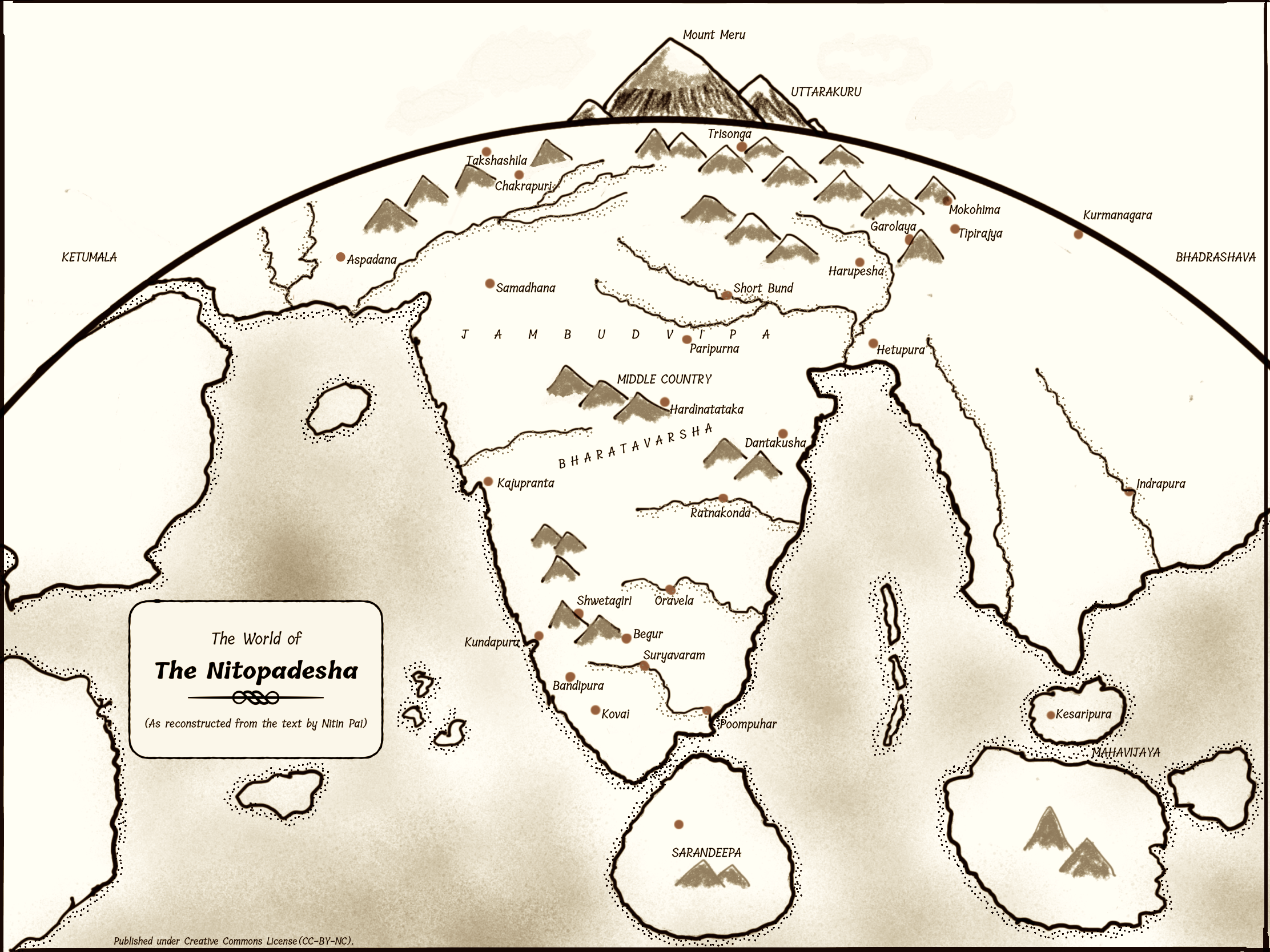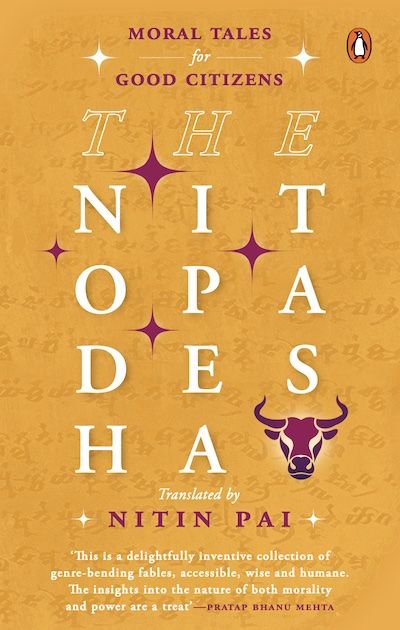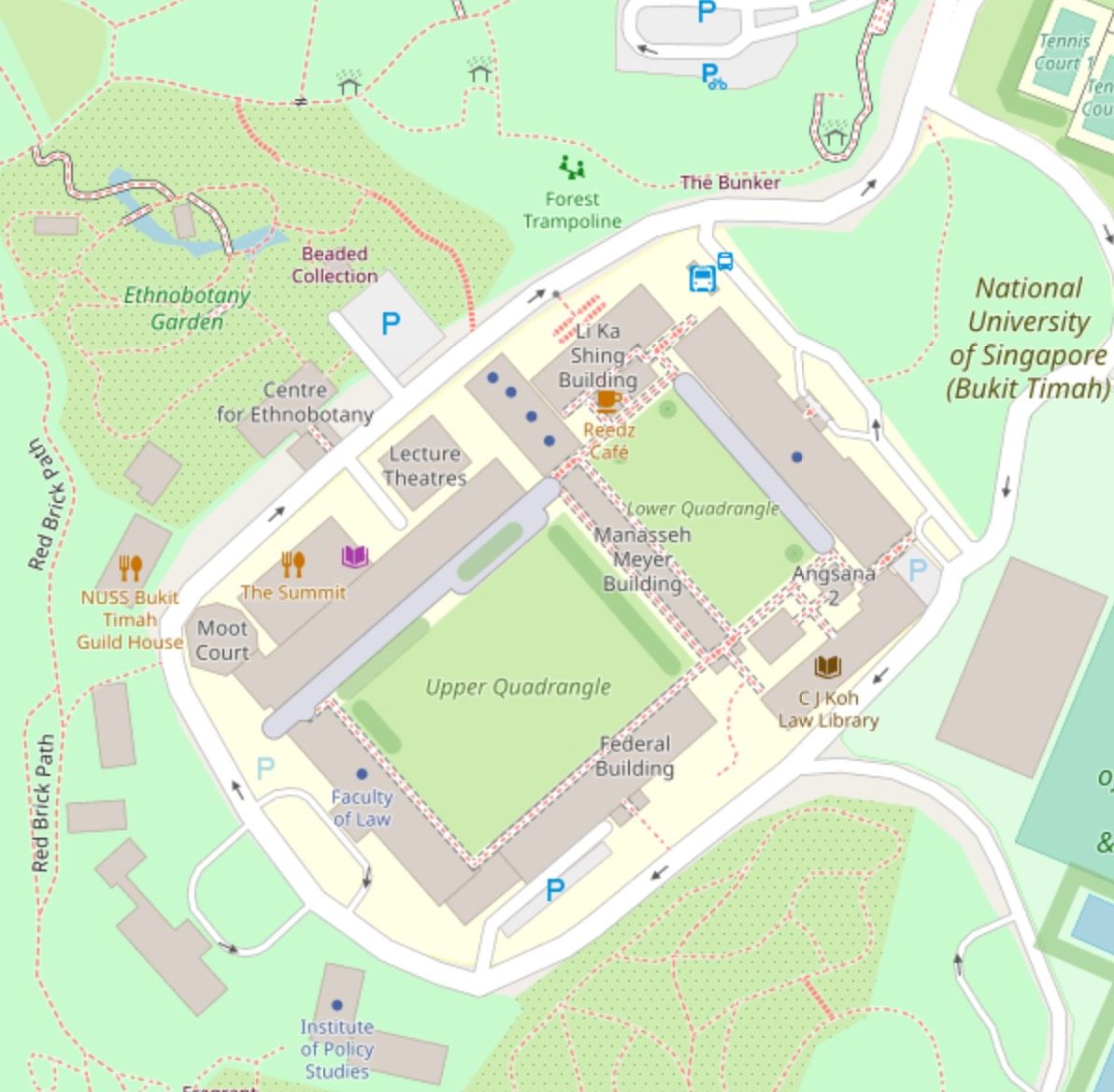Additional Materials related to The Nitopadesha
This is an unedited draft of the Translator’s note that appears in the book. There may be minor changes in the published version. Readers are advised to read the Coda at the end of the book to get the complete story…or at least, as complete as it was when the book went to print. All I can say is that the mystery remains.
Translator’s note
How the manuscript of the Nitopadesha came into my hands is a story in itself. In 2012 I found myself spending a lot of time at the National University of Singapore’s Bukit Timah campus, both at the Lee Kuan Yew School of Public Policy and the Institute of South Asian Studies that were then both housed in those beautifully restored heritage buildings. After an academic conference on Afghanistan — where the United States was then engaged in a bloody counter-insurgency war — I was waiting for a cab at the porch when a long-bearded Afghan in a full shalwar suit and pakol cap approached me tentatively and asked if I spoke Hindi. Upon learning that I could, his face lit up, and he asked me how he might get to the university library. He was looking for books on the 19th century history of Central Asia, which I knew were to be found in the central library at the Kent Ridge campus, a few kilometres away. My cab arrived and since I was headed in that direction, I offered to give him a ride.
Clearly more comfortable in the air-conditioned back seat of the taxi than in the humid mid-day temperatures of the city, Professor Asfandyar — for that was his name — told me in accented, Farsi-heavy Urdu that he used to be a professor of History before the Soviet invasion forced him to join the ranks of Ahmed Shah Masood’s mujahideen, and that he had fought against the Taliban in the late 1990s alongside the Northern Alliance. He had heard that the Singapore university library housed many books from the 19th century and this, more than the conference, was the real reason why he had travelled all the way.
When he learned that I had recently co-founded an institution named after Takshashila, his eyes lit up for he was clearly aware of how that historical city and its culture connected the peoples of Persia, Afghanistan, Central Asia and India. A look of animation came across his face when I told him my name, but our conversation was interrupted by the arrival of the cab at the library. As I saw him off on the kerb, he beamed, putting his hands on my shoulder. “Nitin of Takshashila!” he exclaimed, before wrapping me in a warm bear hug.
A few months later as I was packing my bags for India, I received a well-wrapped parcel from Afghanistan containing a manuscript in a language that I could not immediately distinguish. There were around a hundred pages of ancient paper each enclosed in a sleeve of transparent film. The pages were roughly 30cm wide by 20cm and most were torn on right side, perhaps where there had been binding of some kind. Almost all of them were damaged but what was remaining was remarkably well preserved. There was a note from Professor Asfandyar thanking me for helping him in Singapore and inviting me to stay with him if I were to ever visit Afghanistan. I took a few photographs of the first few pages of the manuscript, packed it carefully, mostly forgot about it for over a decade preoccupied as I was in the complicated projects of first settling the family down in Bangalore and then setting up the Takshashila Institution.
During the lockdown of 2020 I came across those photos that I had taken, and on a whim, used them to do an image search on the internet. I found out that the script is Tocharian and further that it could be translated by machine. As soon as the cover page was translated, I understood why Prof Asfandyar had sent it to me. For it was the The Nitopadesha, composed by a certain “Nitina of Takshashila.”
The book that you hold in your hand is the result of modern machine translation, further refined by me, of the Tocharian version into English. The Tocharian manuscript itself is a translation of the original Sanskrit text — which is either lost or has not survived — composed sometime in the first few centuries of this millennium. I suspect that it is part of the missing codex of the Brihatkatha, the uber-family of texts that includes the famous Panchatantra.
The manuscript is undoubtedly of great value to historians and scholars and deserves to be studied in great detail. I am, however, unable to make the original available to the scholarly community as I merely hold in trust what properly belongs to Professor Asfandyar. While he did send it to me I am not sure if it was a gift, loan, or an attempt at safe-keeping, and thus I am unable to decide on its future. The legal position is also uncertain with respect to this object of antiquity — does it belong to a government or to the individual who has come to possess it? Political maps have changed many times since the manuscript came into being, and it is unclear to me which modern nation-state it ’belongs’ to. Modern Afghanistan, India, Tajikistan, Pakistan, Nepal, Iran, Russia, Tibet, Kazakhstan, China and perhaps even the United Kingdom have reasonable legal grounds to claim it. It has potential to exacerbate international relations that are already vexed, and prudence dictates that I should at least get his permission before I hand it over to a competent university or museum.
Unfortunately my repeated efforts to contact Professor Asfandyar have not borne fruit, and therefore the world of scholars will have to wait a little longer. Yet it would be unfair to deny the people of the world such a sublime jewel of our shared history and culture, which is why I have decided to publish this translation. A critical edition will be published in the fullness of time.
I am not a scholar of history or classical languages, and my only contribution here is to try and improve what computer algorithms translated. Also, since there were gaps in the manuscript where the paper was damaged or the text unreadable, I have made what I believe are logical extrapolations that retain the essence of the text. Thus this work must be treated as an early, imperfect attempt to introduce the world to existence and wisdom of the Nitopadesha. I am entirely responsible for the errors and mistakes and for this I sincerely apologise to both composer of the manuscript and the guardians who have kept it safe over the vicissitudes of time.
Finally, this is not so much a book that one merely reads for oneself, but a collection of stories that are transmitted by one generation to the next. They can be read individually or in any order. The most profitable way to use this book however, is to gather your young friends and family around and read it aloud to them.
Nitin Pai
July 2021
Bonus material
Here’s a map of the world of the Nitopadesha that I reconstructed from the text. 
© Copyright 2003-2024. Nitin Pai. All Rights Reserved.

